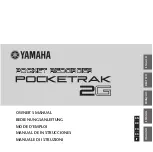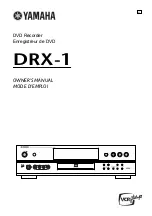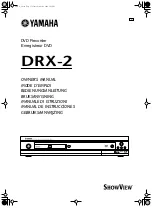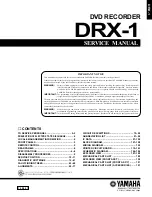
CUSTOMIZING A CHART
If you don't find a chart you like from one of the four charts programmed in your
Dash 4u, you can change the chart in two different ways.
•
The first is Auto-Chart:
[SYS] [AUTO-CHART SETUP]
Here the Dash 4u walks you through selecting how many channels you want
and whether to overlap them or display them individually. You are prompted
to save this chart to one of the four available charts.
•
The second method is to set up each channel's grid parameters manually:
[SYS] [CUSTOMIZE CHART]
… Note that the changes made will affect
the current chart that you are working with (Chart 1-4).
There are three parameters involved with displaying a channel:
Grid, waveform trace and text buffer.
It is recommended for each channel used that its grid be turned ON:
[SYS] [CUSTOMIZE CHART] [CHANGE GRID]
. Under this menu, you can
change the size, location and appearance of each grid.
Also, each channel used should have its trace drawn on the chart:
[SYS] [CUSTOMIZE CHART] [CHANGE WAVEFORMS]
[PEN up]
or
[PEN down]
.
Lastly, there are six text buffers that are defaulted to write a channel number.
Although the buffers are independent of the grid and waveform, it is typical to
associate one text buffer for each channel. It is recommended to turn off the
buffers for those channels not used:
[SYS] [EDIT LABELS / TEXT]
.
6. AMPLIFIER SETTINGS
There are six amplifier keys located on the right side of the front panel, four keys for the four signal inputs and two keys
for the two channels derived from the signal inputs. When one of the four signal input channels is selected, several
choices for channel settings are available:
[SET RANGE]
Sets full scale value for the channel.
[SET OFFSET]
Sets the zero offset from the center of the channel.
[DC / GND]
Toggle between grounding and ungrounding the channel.
This does not ground the signal input itself!!
[PK - PK / RMS]
Toggle between peak-to-peak or RMS value.
[SETUP DSP / FILTER]
Select type of filter (notch, low pass, high pass, band pass).
[SETUP USER SCALING]
Assign engineering units to the channel values. Includes offset compensation.
[COPY AMPLIFIER]
Copy part or all of a channel setup to another or all other channels.
[CALIBRATE]
Calibrate channels using module or manual method.
[ADVANCED]
- Attenuator settings for selected amplifier type.
- Change amplifier type (single-ended, differential, temperature, DC bridge,
RTD or frequency {channel 1 only}).
For the two math channels, amp keys M1 and M2 are provided. In addition to the RANGE, OFFSET and DC / GND keys
described above, dedicated keys for setting up the math function are provided:
[QUICK AUTO-SCALE]
Sets full scale value for the channel based on the selected math function.
[MATH OPERATION]
Select from add, subtract, multiply, divide, apparent power, true power and
power factor based on two of the four signal inputs. Select RMS, integration or
differentiation of any one of the four signal inputs.
See exercises in Section 9 for details on using the Amp keys.





























